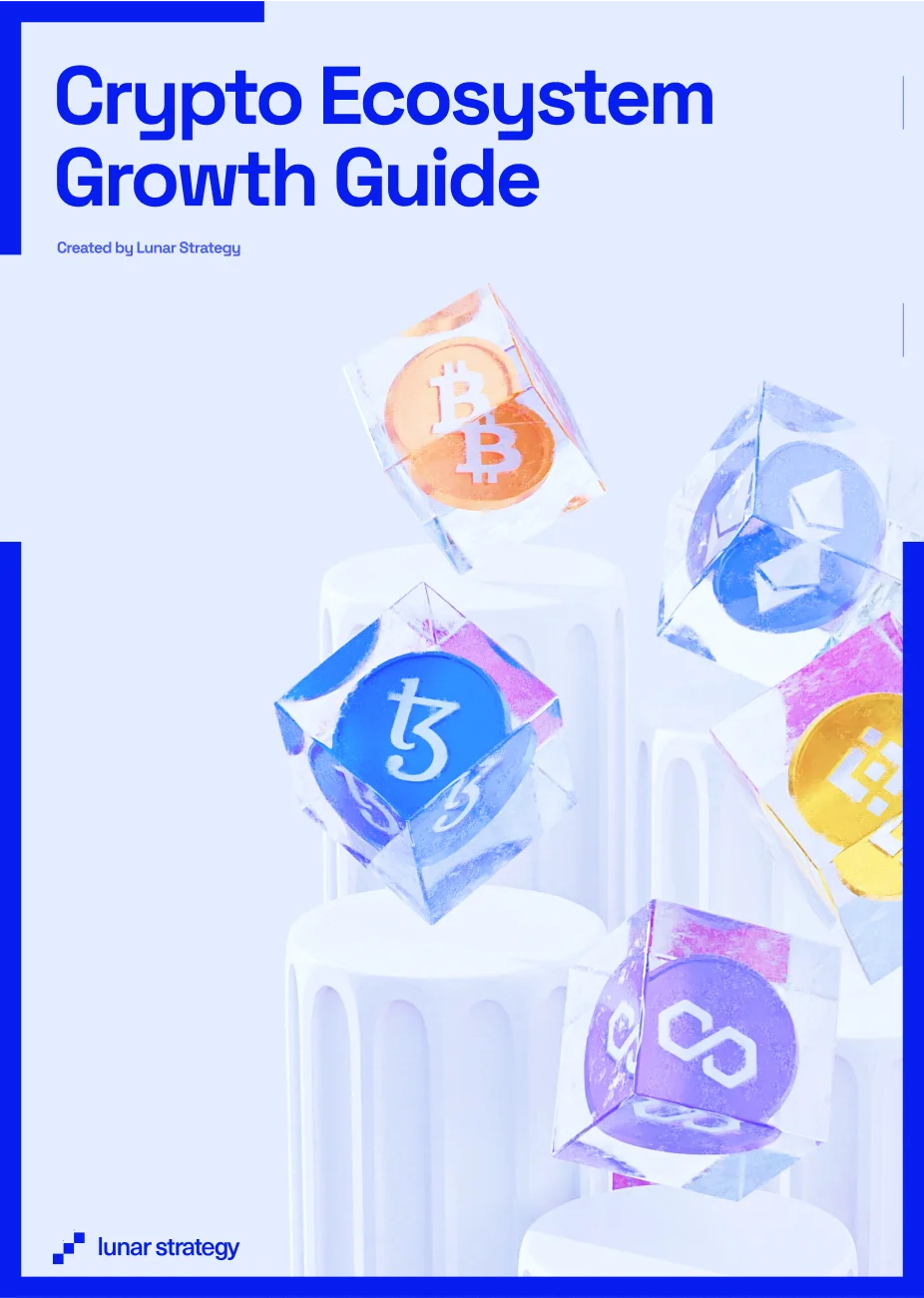2024 is shaping up to be one for the record books in the cryptocurrency industry. We have already witnessed the long overdue approval of the spot Bitcoin ETF and many are hopeful that we are now emerging out of one of the worst bear markets in crypto’s history, and with institutional capital now having the green light to enter the sector, there is further hope that we could be on the crux of the longest and most sustained bull market in crypto’s history.
This article is going to explore some of the trending narratives and niches to watch throughout the year. While I am on the fence and many macro analysts seem unable to agree whether or not 2024 will prove to be a bullish year, if we are truly entering a prolonged bull market, these are some of the trends and sectors poised to attract attention and capital when the bull finally rears its head.
Tried and Tested: Decentralized Finance (DeFi)
DeFi is one of the oldest cornerstones of the crypto industry and is the pivotal foundation for the sector as a whole. Without decentralized finance, digital assets would be able to achieve little more than simply being stores of value and peer-to-peer payment methods.
Decentralized finance is an emerging financial ecosystem that utilizes blockchain technology to create a more open, transparent, and user-centric approach to financial services. DeFi offers a significantly revolutionary concept, as, for the first time in modern history, financial sovereignty is placed back into the hands of individuals.

Unlike traditional financial systems, which rely on intermediaries such as banks and brokerages, DeFi operates on a peer-to-peer (P2P) basis, eliminating intermediaries and empowering individuals to take control of their finances. The core principles of DeFi are:
- Decentralization- The removal of authoritative intermediaries
- Transparency- DeFi transactions are recorded on a public blockchain, providing immutability and transparency
- User Autonomy- DeFi enables individuals to make their own financial decisions without the need for gatekeepers.
Growing Adoption of DeFi Protocols
DeFi protocols are gaining traction across various financial services, including lending, borrowing, and asset management. These protocols offer competitive interest rates, lower fees, and faster transaction speeds and settlements compared to traditional financial institutions.
Examples of Successful DeFi Projects
Numerous DeFi projects have emerged in recent years, demonstrating the growing interest and potential of this innovative financial ecosystem. Some of the most notable examples include:
Compound: A decentralized lending platform that allows users to lend and borrow crypto assets with interest.
Aave: A lending and borrowing platform with a wider range of assets and more flexible borrowing options.
Uniswap: A leading decentralized exchange that facilitates peer-to-peer trading of cryptocurrencies.
MakerDAO: A decentralized stablecoin protocol that issues DAI, a cryptocurrency pegged to the US dollar.
Synthetix: A decentralized derivatives platform that allows users to create and trade synthetic assets.
These projects have demonstrated the power of DeFi to revolutionize finance, providing new opportunities for individuals and communities worldwide. As DeFi continues to evolve, its impact on the financial landscape and society as a whole is likely to grow significantly.
However, when looking to capitalize on early trends it should be stated that DeFi is already well established and the projects named already have large market caps. There is only a small fraction of the global population currently engaging in Decentralized Finance so there is a good chance that established DeFi projects will continue to attract new users and capital over the long term but the sector’s growth is likely to be a slower sustained growth and not quite as explosive as some of the other newer trends and narratives we will explore.
Non-Fungible Tokens: Revolutionizing Ownership and Creativity
Non-fungible tokens (NFTs) are a revolutionary technology that has captured the imagination of the world by introducing a new paradigm of ownership and creativity. NFTs are unique digital assets that exist on a blockchain, providing immutability and traceability.

Each NFT has a unique identifier, making it impossible to duplicate or counterfeit. This unique characteristic has enabled NFTs to become digital certificates of ownership for a wide range of assets, including art, collectibles, gaming items, and even real estate.
Unique Characteristics of NFTs
NFTs possess several unique characteristics that have set them apart from traditional digital assets:
Immutability: NFTs are stored on a blockchain, a secure and tamper-proof ledger. This immutability ensures that the ownership record of an NFT cannot be altered or deleted.
Scarcity: Each NFT is unique and cannot be replicated. This scarcity creates a sense of value and exclusivity, driving demand for NFTs.
Transparency: All NFT transactions are recorded on a public blockchain, providing transparency and traceability. This transparency fosters trust and confidence among buyers and sellers.
Diverse Applications of NFTs
The applications of NFTs are rapidly expanding, with new use cases emerging all the time. Some of the most notable applications of NFTs include:
Art: NFTs have revolutionized the art world, allowing artists to sell their work directly to collectors without intermediaries. This has democratized art ownership and enabled artists to share a larger portion of the proceeds with themselves.
Collectibles: NFTs have created a new market for collectibles, including digital artwork, trading cards, sports memorabilia and more. NFTs provide a secure and verifiable way to own and trade these collectibles.
Gaming: NFTs are transforming the gaming industry, allowing players to own, trade and sell in-game items such as avatars, and equipment. This has created new opportunities for players to monetize their gaming experiences.
Real Estate: NFTs are being used to tokenize real estate, creating a new way to buy, sell, and invest in real estate. This could democratize access to real estate and make it more liquid and exposure more affordable through fractional ownership.
Digital Real Estate: As more of our lives are being lived in digital realms, gaming universes and metaverses are becoming increasingly popular with people spending more time in these digital spaces. This is where things like digital real estate NFTs representing land and buildings are becoming increasingly attractive.
Examples of Successful NFT Projects
While the popularity of NFTs have experienced everything from euphoric excitement to waning interest and the majority of NFT projects losing over 90% of their value, there are several successful NFT projects that have demonstrated the potential of this technology:
- CryptoPunks: CryptoPunks are a collection of 10,000 unique pixel art avatars. They were launched in 2017 and have become some of the most valuable NFTs, with some selling for millions of dollars.
- NBA Top Shot: NBA Top Shot is a blockchain-based platform that allows fans to buy and trade NBA highlights. The platform has been a huge success, generating over $700 million in sales.
- Axie Infinity: Axie Infinity is a game that allows players to collect, breed, and battle digital creatures called Axies. The game has become a popular way to earn cryptocurrency, with some players earning thousands of dollars per month.
- The Sandbox: The Sandbox is a virtual world where players can create and monetize their own games and experiences. The platform has attracted a large community of users, and some players have earned millions of dollars by selling land and in-game items.
These projects are just a few examples of the many innovative applications of NFTs. As the technology continues to develop, we can expect to see even more creative and transformative uses of NFTs in the years to come, including more commercial applications such as contracts and legal agreements.
The Metaverse: A Convergence of Virtual Worlds
The metaverse is a term used to describe a hypothetical future iteration of the internet as a single, interconnected, and immersive digital world. Unlike the current internet, which is primarily based on text and images, the metaverse would allow users to interact with each other and with digital objects in a more realistic and embodied way. This could be done through the use of virtual reality (VR) headsets, augmented reality (AR) glasses, or other devices.

Immersive and Interactive Experiences
The metaverse has the potential to create immersive and interactive experiences that would be impossible to replicate in the real world. For example, users could attend virtual concerts, explore virtual museums, fly around in outer space, own virtual property, the list goes on, your imagination is the limit. This could lead to a more connected and social world, where people can interact with each other regardless of their physical location.
Cryptocurrencies and Blockchain Technology in the Metaverse
Cryptocurrencies and blockchain technology could play a crucial role in powering the metaverse economy. For example, cryptocurrencies could be used to buy and sell virtual goods, such as clothing for avatars or land in virtual worlds. Blockchain technology could also be used to create secure and transparent records of ownership and transactions.
NFTs in the Metaverse: Ownership and Authenticity
Non-fungible tokens (NFTs) could be used to represent ownership of digital assets in the metaverse. This could include virtual land, digital clothing, or even avatars themselves. NFTs would make it possible to create a secure and verifiable record of ownership, which could be used to prevent fraud and encourage trade.
There are already several metaverse projects underway, each with its own unique vision for the future of the internet. Some of the most notable projects include:
- Decentraland: A decentralized virtual world where users can own and develop land.
- Sandbox: A virtual world where users can create and monetize their own experiences.
- Roblox: A popular game platform that is increasingly being used to create virtual worlds.
- Second Life: An early pioneer in the metaverse space, Second Life has been around since 2003.
- Star Atlas: An ambitious space-themed metaverse project that looks to create new economies and gameplay on a galactic scale.
- Fortnite: A popular video game that has recently experimented with metaverse-like features, such as virtual concerts and shopping malls.
These projects are just a few examples of the many ways that the metaverse is being imagined and developed. As technology continues to evolve, we can expect to see even more innovative and groundbreaking metaverse projects in the years to come.
The Future of Social Interaction and Commerce
The metaverse has the potential to revolutionize social interaction and commerce. It could allow people to connect with friends and family who live far away, or to attend virtual events without having to travel. It could also create new opportunities for businesses to reach customers and sell products. Ever dreamt of running a milkshake stand in outer space? With metaverse games like Star Atlas, that could be a reality.
However, there are also some potential challenges that need to be addressed, such as privacy, security, and access. It is important to ensure that the metaverse is a safe and inclusive space for everyone. There are also technical barriers to entry and cost. Early metaverse projects lack the advanced technology required to create life-like fully immersive virtual environments and the equipment needed to interact with these environments, such as Meta’s Meta Quest cost thousands of dollars.
Overall, the metaverse is a promising new frontier that holds the potential to transform the way we interact with each other and with the world around us. As we continue to explore the possibilities of new virtual worlds, we can expect to see even more innovative and groundbreaking applications emerge in the years to come.
Decentralized Physical Infrastructure (DePIN): Bridging the Digital and the Physical
Decentralized Physical Infrastructure (DePIN) is a revolutionary concept that aims to reimagine the underlying network architecture of the internet, shifting from a centralized to a decentralized model. This paradigm shift holds immense potential to revolutionize both the crypto industry and the physical world, ushering in an era of enhanced security, transparency, and user autonomy.

Implications of DePIN on the Crypto Industry:
Blockchain technology has evolved beyond mere payments and finance and is now revolutionizing the very internet itself, progressing humanity away from the current technocracy of Web2 giants who sell and manipulate our data and placing infrastructure in the more fair and democratic hands of the end user as a community.
DePIN projects aim to provide the following benefits over the traditional Web2 model:
Enhanced Security: Decentralized infrastructure eliminates the reliance on centralized servers, making it more difficult for malicious actors, either internal or external to disrupt or manipulate the network. It also removes third-party centralization risk, creating a more robust and censorship-resistant network.
Transparency: Transactions on DePIN networks are recorded on a public blockchain, ensuring complete transparency and immutability. This transparency fosters trust and confidence among users and institutions, enabling more seamless integration of cryptocurrencies into mainstream finance.
User Autonomy: DePIN empowers users to control their own data and financial assets, reducing reliance on intermediaries and facilitating greater self-sovereignty. This autonomy aligns with the core principles of decentralization and blockchain technology.
Role of Cryptocurrencies and Blockchain in Powering DePIN Economy:
Cryptocurrencies as Fuel: Decentralized infrastructure utilizes cryptocurrencies as the primary medium of exchange and incentive mechanism within its ecosystems. Cryptocurrencies facilitate decentralized governance, and reward network participants for using the network, contributing to security and maintenance, while also enabling seamless peer-to-peer transactions.
Blockchain as Foundation: Blockchain technology serves as the underlying backbone of DePIN networks, providing tamper-proof and distributed ledgers for recording transactions, identities, and other crucial data. Blockchain's cryptographic security and immutability safeguard the integrity of the decentralized system.
Potential Use Cases of DePIN:
Internet Infrastructure: DePIN can revolutionize internet infrastructure, replacing centralized servers with a decentralized network of nodes. This decentralization could enhance network performance, resilience, and security.
Decentralized Applications (DApps): DePIN networks provide a secure and scalable platform for hosting DApps, decentralized applications that operate without intermediaries. DApps could encompass a wide range of use cases, from financial services to social networks to gaming.
Internet of Things (IoT): DePIN can connect and manage billions of IoT devices in a secure and decentralized manner, enabling seamless data exchange and enhanced security for connected devices.
Self-Sovereign Identity: DePIN can empower individuals to manage their own digital identities and control access to their personal data, fostering greater privacy and security in the digital world.
Supply Chain Management: DePIN can streamline supply chain operations by providing tamper-proof records of product provenance, authenticity, and logistics, enhancing transparency and accountability.
Examples of DePIN Projects and Their Potential Impact:
There have already been examples of successful DePIN projects that have fundamentally shifted the process of how things were done in the Web2 era.
Helium Network: Helium is a decentralized wireless network that utilizes blockchain technology to enable low-power IoT devices to connect and communicate without relying on traditional cellular networks. Helium has already experienced explosive global adoption, providing peer-to-peer online connectivity. Helium is a proven use case showing how this technology can revolutionize the way IoT devices are deployed and managed.
Polkadot: Polkadot is a blockchain platform that facilitates interoperability between different blockchains, enabling seamless communication and data exchange between decentralized networks. This could foster a more interconnected and unified crypto ecosystem.
Filecoin: Filecoin is a decentralized storage network that utilizes blockchain technology to incentivize users to rent out their unused storage space. This could provide a more secure and cost-effective alternative to traditional cloud storage services, while also enhancing resilience by removing reliance on centralized servers that act as a single attack vector.
Arweave: Arweave is a permanent storage solution that utilizes blockchain technology to ensure that data remains accessible and immutable for the long term. This could revolutionize archival systems and provide a secure way to preserve valuable data.
The potential of DePIN to revolutionize both the crypto industry and the physical world is immense. By decentralizing infrastructure and leveraging the power of blockchain technology, DePIN can enhance security, transparency, and user autonomy, paving the way for a more interconnected, secure, and user-centric digital future.
Real-World Assets (RWAs): Tokenizing the World
The tokenization of real-world assets (RWAs) is a revolutionary concept that utilizes blockchain technology to create digital representations of physical assets. This process enables fractional ownership, enhanced liquidity, and improved accessibility of real-world assets, holding immense potential to transform various industries and reshape the financial landscape.

Tokenizing RWAs: A New Paradigm for Asset Ownership and Efficiency
Traditionally, ownership of physical assets was inherently illiquid and difficult to fractionalize. Tokenizing RWAs breaks down these barriers by representing physical assets on a blockchain, creating tradable tokens that can be easily divided and traded on decentralized exchanges.
Potential Impact of RWAs on the Traditional Financial Industry
The tokenization of RWAs could revolutionize the traditional financial industry in the following ways.
Enhancing Liquidity: Tokenizing RWAs can increase the liquidity of illiquid assets, making them more accessible to a wider range of investors.
Reducing Transaction Costs: By eliminating intermediaries and reducing counterparty risk, RWA tokens can lower transaction costs and make financial markets more efficient.
Democratizing Finance: RWAs can democratize access to asset ownership, enabling individuals to invest in assets they may not have had access to in the past.
Enhancing Transparency: Blockchain technology provides a transparent and immutable record of RWA ownership and transactions, fostering trust and confidence among investors.
Potential Use Cases of RWA Tokens
The tokenization of RWAs has a wide range of potential use cases, including:
Real Estate: Fractionalize ownership of real estate assets, making them more accessible to investors and enabling more efficient property management.
Fine Art: Tokenize rare and valuable artworks, enabling fractional ownership and facilitating easier resale.
Supply Chain Management: Track the provenance and authenticity of goods through tokenized supply chains, enhancing transparency and accountability.
Intellectual Property (IP): Tokenize IP assets, such as music, movies, and software, enabling easier licensing and royalties.
Crowdfunding: Utilize RWA tokens to raise capital for projects and ventures, providing investors with tokenized ownership of the project's assets.
Treasuries, Stocks, Bonds and Commodities: By tokenizing investible assets, the velocity of investment capital and ease of transactions can be significantly increased.
Examples of RWA Projects and Their Potential Impact
Real Estate Investment Trusts (REITs): Blockchain-based REITs are tokenizing real estate assets, making them more liquid and accessible to a wider range of investors.
ArtChain: This platform is tokenizing fine art, enabling fractional ownership and facilitating easier resale.
Tractable: This platform is using blockchain technology to track the provenance and authenticity of goods in supply chains.
Musicoin: This platform is tokenizing music rights, enabling musicians to connect directly with fans and earn royalties.
Republic: This platform is using blockchain technology to conduct crowdfunding campaigns, giving investors tokenized ownership of the project's assets.
The tokenization of RWAs represents a transformative step towards a more democratized and efficient financial system. By unlocking the value of physical assets and making them more accessible to a wider range of investors, RWA tokens have the potential to reshape various industries and fundamentally change the way we interact with assets.
As RWA technologies continue to mature and adoption grows, we can expect to see even more innovative and groundbreaking applications emerge, further revolutionizing the global economy.
Conclusion
In conclusion, the cryptocurrency industry is constantly evolving, with new trends and narratives emerging every year. While DeFi and NFTs have already gained significant traction, there are several other potential niches to keep an eye on in the coming years. As always, investors and enthusiasts must do their due diligence and carefully analyze the long-term potential of any emerging trends before investing their time and capital. With the right approach, the crypto industry has the potential to revolutionize finance, ownership, and creativity, creating new opportunities and value for individuals and communities worldwide.
About the Author:
Tayler McCracken is the Editor-in-Chief of the Coin Bureau, a leading publication that provides cryptocurrency education. Tayler is a seasoned writer, analyst, and researcher with over 6 years of experience in traditional finance and cryptocurrencies. Formerly a financial advisor at a major bank, he left to pursue a passion for providing blockchain-based financial education to those wanting to learn. Recognized as a key opinion leader in the cryptocurrency field, Tayler is dedicated to providing accessible financial education and has collaborated with industry leaders to share his insights through various publications, reaching a wide audience.













Subscribe to receive recent articles



















.webp)







.png)
.png)





